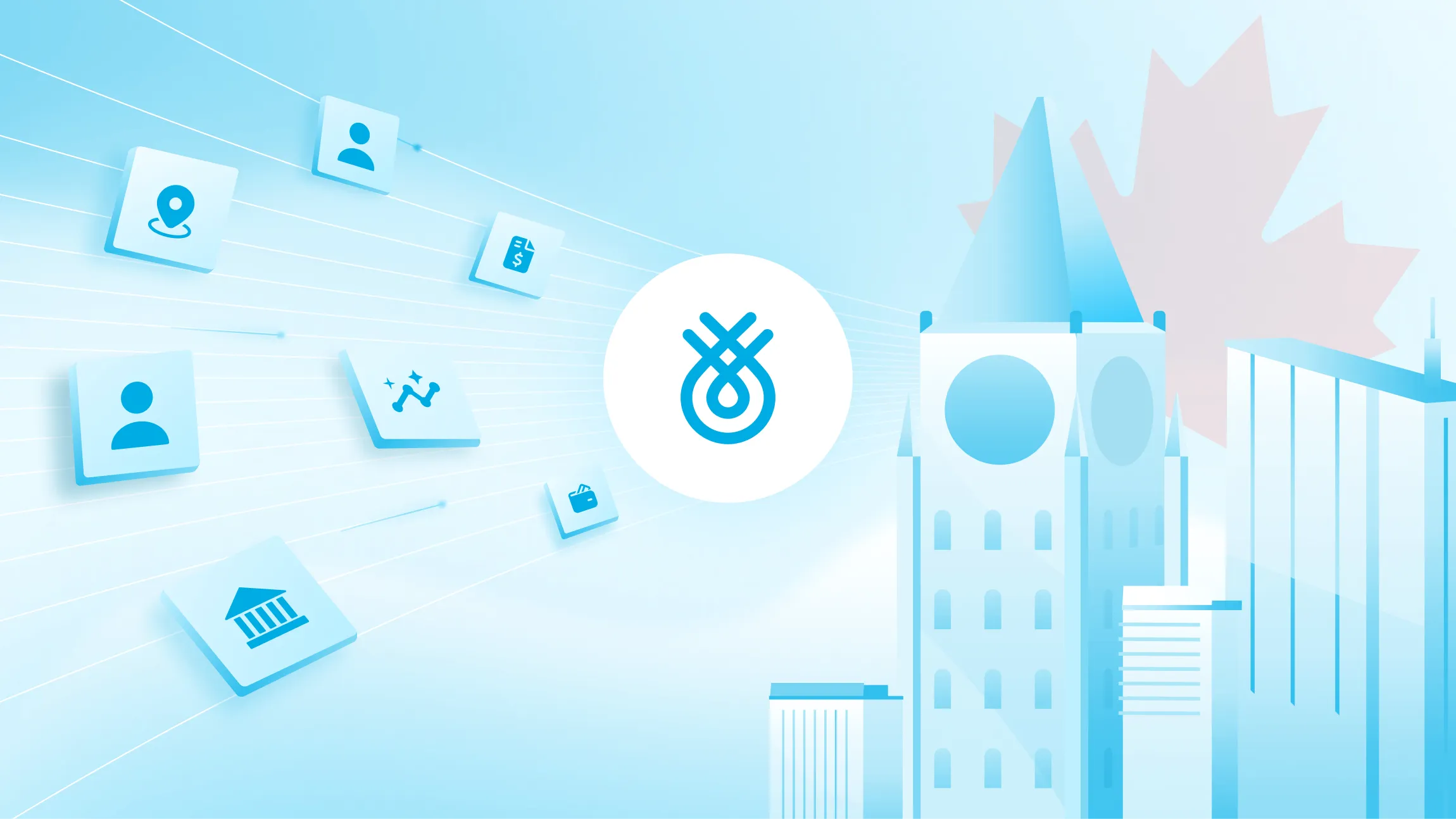We’ve come a long way when it comes to knowing and truly understanding the customer and their spending habits. Thanks to transactional data, it’s now possible to gain a behind-the-scenes look at anyone’s financial history, allowing businesses to leverage comprehensive insights and ultimately support key decision making efforts.
In today’s business world, having unprecedented access to vast amounts of financial information may seem appealing, but it can also be overwhelming due to its complex nature, coded presentation, and the sheer volume of data that must be expertly examined and understood. With that in mind, let’s dive into transactional data and explore the power it has to transform your business.
Understanding Transactional Data
Let’s start with the easy question first: what is transactional data? Simply put, it’s the information that’s been recorded by a customer’s financial journey. Whenever they buy something with a debit or credit card, or interact with their bank account offline or online, that information leaves a digital footprint that is documented by the bank.
This data is collected every time a purchase is made, income is received, funds are transferred, bills, loans, or fees are paid, and even when cash is withdrawn. If you’ve ever viewed your banking history online, you’ve witnessed this information firsthand.
Unfortunately, like many cases of encountering raw data, it may not make much sense at first glance due to how cryptic the transaction descriptions can be. In order to harness the true power of transactional data, you may need a helping hand at deciphering everything, but more on that later.
It’s also worth taking a moment to think about the story this information is telling. Many of life’s important milestones are laid out in painstaking detail. From someone’s first paycheck, to their first car payment, house payment, and everything in between, it’s an extensive amount of knowledge to have about someone. One may think it’s the social media platforms we use that seem to know every little detail about us, but in actuality, it’s the banks that probably know us best.
But the next question we must ask is what exactly can you, as a business, do with all this information?

The Role of Transactional Data in Business
When considering the role of transactional data in business decision-making, it’s important to realize how much it helps us understand customer behavior.
By studying this information (or using a third-party service like Flinks Enrichment to cut down on the work needed to do so), common trends and patterns in how a customer interacts with your business emerges. As the saying goes, knowledge is power because now it’s possible to make data-led decisions about your business in the fields of marketing, product advancements, or even customer service. And that’s just the beginning.
It’s even possible to leverage insights to create reliable business forecasts and strategically plan for the future. In other words, it’s less time spent guessing and more time spent matching your business to your ideal customer profile using financial transaction data.
Benefits of Using Transactional Data in Business
Once you’ve gathered a set of transactional data points from your customer base, and you’ve identified and analyzed a few basic patterns and trends in how they interact with your business using enriched data, it’s time to start acting on these insights.
For example, by breaking down customers based on their spending habits, you can easily segment your audience into appropriately tiered groups, enhancing how your teams manage and nurture these important relationships.
This is also a great time to create and deploy effective communication efforts that perfectly align with your customers’ preferences. Doing so builds stronger, more personal relationships between your sales teams and your customer groups, while helping identify relevant opportunities for upselling or cross-selling.
Ultimately, this leads to a more efficient business model for everyone involved. Gaining an understanding of your customers’ buying behavior will help teams identify product demand, leading to a healthier supply chain. Analyzing transactional data can also uncover previously unknown bottlenecks or inefficiencies, providing areas for optimization throughout the business process.
By consolidating all the information that’s been gathered, it’s possible to make informed decisions that will enable accurate and reliable business forecasts. When it comes to elements like budgeting, resource allocation and beyond, it’s clear that predictive modeling based on transactional data reporting can help create a comprehensive forecasting strategy.

Challenges in Using Transactional Data
Due to the sensitive nature of storing and accessing the personal information provided by transactional data, it’s important to recognize the privacy and security concerns that go along with it. When handling sensitive information of any kind, keeping it safe and secure is essential.
Similarly, it’s also crucial to ensure said data is properly cleaned so it’s easily understood, up-to-date, and accurate. In many cases, a skilled data analyst with an understanding of machine learning goes a long way in achieving these goals.
A skilled data analyst will significantly reduce the vulnerabilities that come with storing transactional data to prevent potential leakage or loss. They will also fully understand the government regulations that are in place to protect individuals from privacy breaches and keep companies compliant. This does come at a cost, however, as employing an experienced data analyst may also be outside of your business’ scope.
Setting up robust cybersecurity measures, routine audits, and ongoing employee training are a must when it comes to maintaining customer trust and mitigating company risk.
Overcoming Challenges
Fortunately, collaborating with the right technology partner can help significantly when it comes to handling transactional data. By incorporating the automation, digitization, and enrichment processes a fintech partner like Flinks provides with their Enrichment product, you’ll reduce manual errors and improve data accuracy at the same time.
To further support this process, the importance of transactional data analysis cannot be overstated. Whether this operation is left up to skilled data analysts or a third-party fintech, targeted reporting and custom data-sets are key to gaining a better understanding of your customers.
If data analysts are unavailable to you, when working with companies like Flinks that offer an 1800+ attributes library, you can start generating customizable reporting with insights tailored to your specific needs. You can quickly transform and extract highly accurate raw data with a simple and secure API connection. The financial transactional data will be ingested, cleaned, and provided back to you in an easy-to-understand report based on the specific use-case attributes of your choice.
Case Studies
As transactional data has started to make an impression on the financial world, we’ve witnessed more and more businesses leveraging this valuable information to great success.
When loan agency Merchant Growth needed to provide a fully digital, quick, and easy experience for their customers, while automating the onboarding process and risk analysis, the data connectivity offered by Flinks allowed the team to gain an in-depth understanding of their customers’ actual and entire financial situation.
“Everything we do drives convenience for our customers. Bank transaction data is a key pillar in our risk score analysis - and we need to keep our loss rate low. Flinks allows us to digitize and automate our processes for faster, better service and targeted product offerings.”
David Gens, CEO, Merchant Growth
In the short term, this directly contributed to helping Merchant Growth expand their customer base and keep their loss rate low. But in the long term, this has gone on to support market renewals, targeted product lines, and customer service, along with the development, and even the predicting of, future business offerings.
Leading fintech lender Spring Financial was also interested in running a risk analysis of their customers’ financial situation and ability to repay, while delivering personalized customer care touch points with timely recommendations.
“It’s all about understanding our customers - and Flinks provides the best insight into customer behavior that exists.”
Tyler Thielmann, VP of Consumer Lending, Spring Financial
By leveraging the data aggregated by Flinks’ data connectivity, the team at Spring Financial delivered personalized loan offers or credit building programs that put customers on a clear path to success. In addition, this unrestricted access to data now helps power the whole business and even plays a critical role in cultivating strong customer relationships.
From these recent examples, we can see firsthand how and why the fintech world has begun embracing the sheer power of transactional data. We can see that there are many immediate and even more gradual benefits that go hand-in-hand with transparent access to customer financial history.
In a win-win type situation, these benefits create distinct advantages for customers and businesses alike, by accelerating and modernizing the risk analysis process for customers, while providing businesses with opportunities for relationship-building and growth.
But where do we go from here?
The Future of Transactional Data in Business
As technology continues to evolve, so will the power of data. In the realms of AI and machine learning, we’re already seeing possibilities emerge to help streamline this process and overall, the future looks bright.
Similar to any collection of data, the possibilities of leveraging further insights starts with creating and defining clear business objectives. Where would you specifically like to add value? Transactional data has the capability to grant your business a serious competitive edge, but the insights must be understood and communicated effectively throughout each area of your business, especially when it comes to major decision-makers.
By analyzing the recent transactional data examples set forth by companies like Merchant Growth and Spring Financial, we can anticipate what may come next as familiarity with fintech platforms and their ability to use enriched transactional data continues to advance.
We’ve seen these businesses start to improve upon customer relationships, but the future opportunities in retention and potential churn prediction are tantalizing prospects. By gathering even more financial transactional data of loyal customers to expand your knowledge base, it’ll be possible to examine and anticipate economic and market trends. In addition, by continuously monitoring and improving upon data sets, it will ensure you’re drawing from fresh and actionable information.
Adding Transactional Data to Your Business
Transactional data has the potential to transform the way your company accesses, processes, and utilizes financial information to radically improve business outcomes.
If your team hasn’t started studying and acting upon the wealth of information you can acquire from your customers’ financial history, you’re absolutely missing out on valuable opportunities for business refinement and expansion.
For actionable insights based on your raw transactional data with a custom analytics framework, consider Flinks Enrichment. Whether your business requires high-level analysis in the fields of lending, income, and credit risk, or bigger picture snapshots of user journeys or business operations, Flinks has got you completely covered.
Alternatively, feel free to book a personalized demonstration with one of our experts so we can better discuss how Flinks can help you financially innovate your business today.




